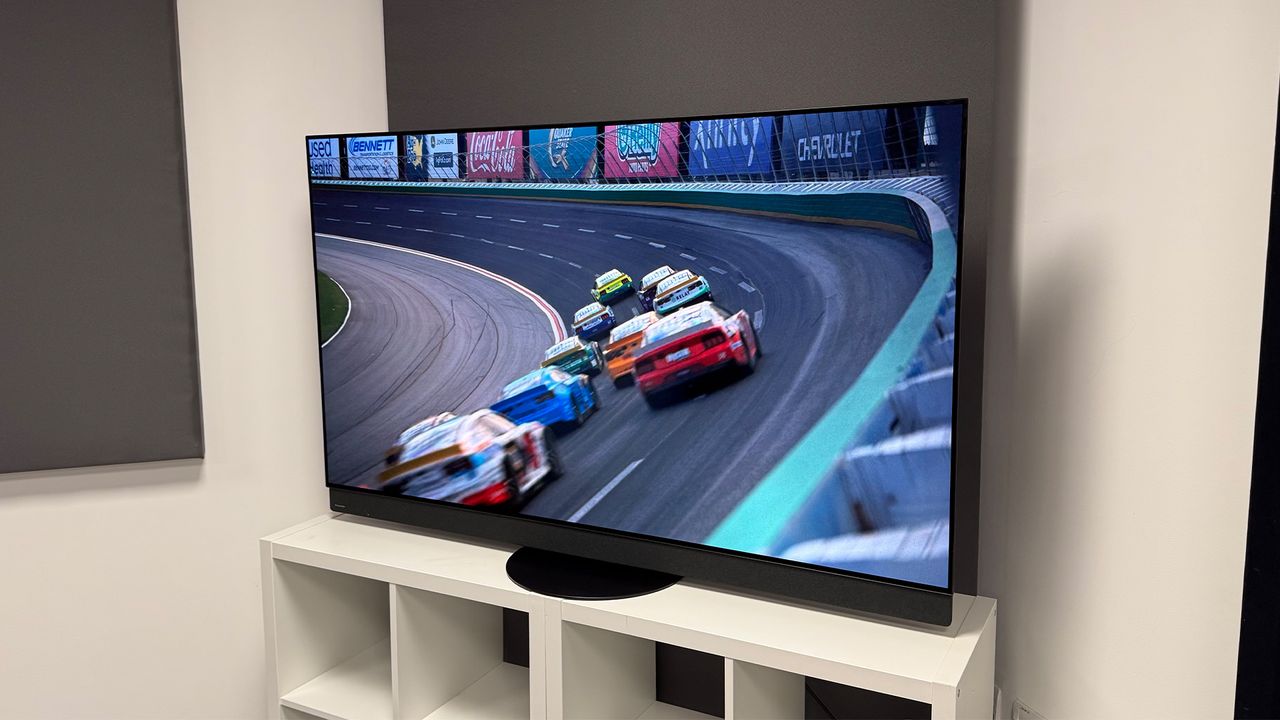
We tend to get rather excited when Panasonic OLED TVs land in our testing room, as they have a penchant for delivering striking cinematic images that pride themselves on being close to the original artist’s intent.
If you weren’t already aware – Panasonic may have mentioned this once or twice in the last few years – these are the TVs that large numbers of directors, editors and colourists favour in Hollywood studios, so expectations are often quite high.
We have here the latest model in Panasonic’s revered Z95-series (previously known as the Z2000 series), so can the Z95B carry forth what made its predecessors, namely the Z95A and MZ2000, so special?
It’s certainly got the ingredients, including the latest Primary RGB Tandem OLED panel technology, but can it steal the spotlight from the likes of the dazzling Sony Bravia 8 II or showstopping LG G5?
Price
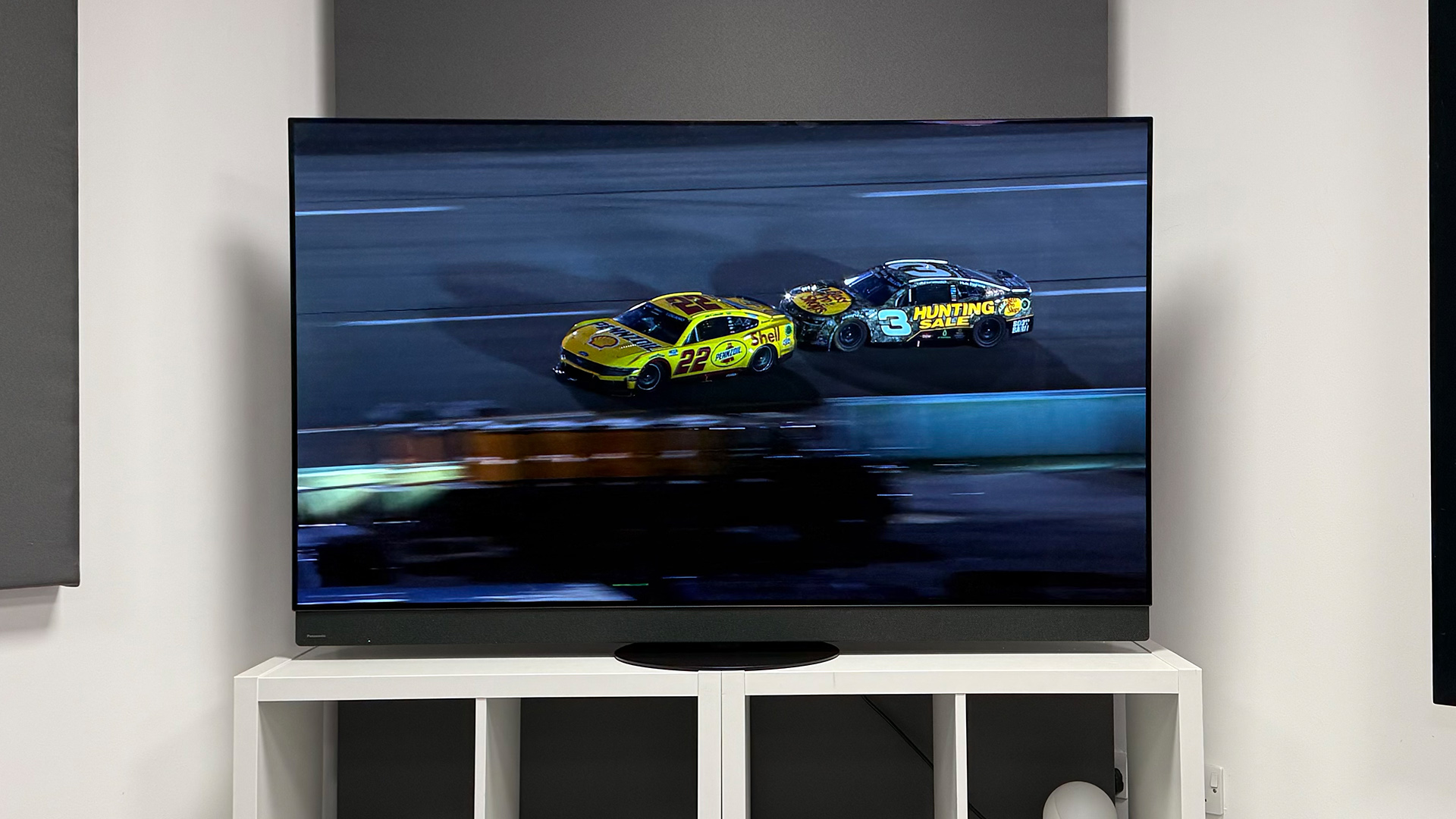
We have the 65-inch model before us today, which is officially priced at £2999 / $3400, putting it squarely in the flagship category. It’s not available in Australia, unfortunately, but currency conversion (at the time of writing) suggests that it would cost roughly AU$6145.
It’s also available in 55-inch and 77-inch screen sizes, which are priced at £2500 / $2600 and £4000 / $4500 respectively.
There is some good news, however, as prices appear to already be dropping. You can currently find the 65-inch model for closer to £2800 / $3100 if you shop around.
Compared to its rivals, the Panasonic is priced surprisingly competitively; so much so that it launched at a lower price than the LG G5 (£3299 / $3400 / AU$5299) and Samsung S95F (£3399 / $3299 / AU$5299). However, both of these TVs have also been discounted since launch, which means they’re more in line with the Panasonic.
The Sony Bravia 8 II launched for less than the Panasonic in the UK, but more in the US (£2999 / $4000 / AU$5295); though that too can now be found for closer to £2699 / $3000.
Build
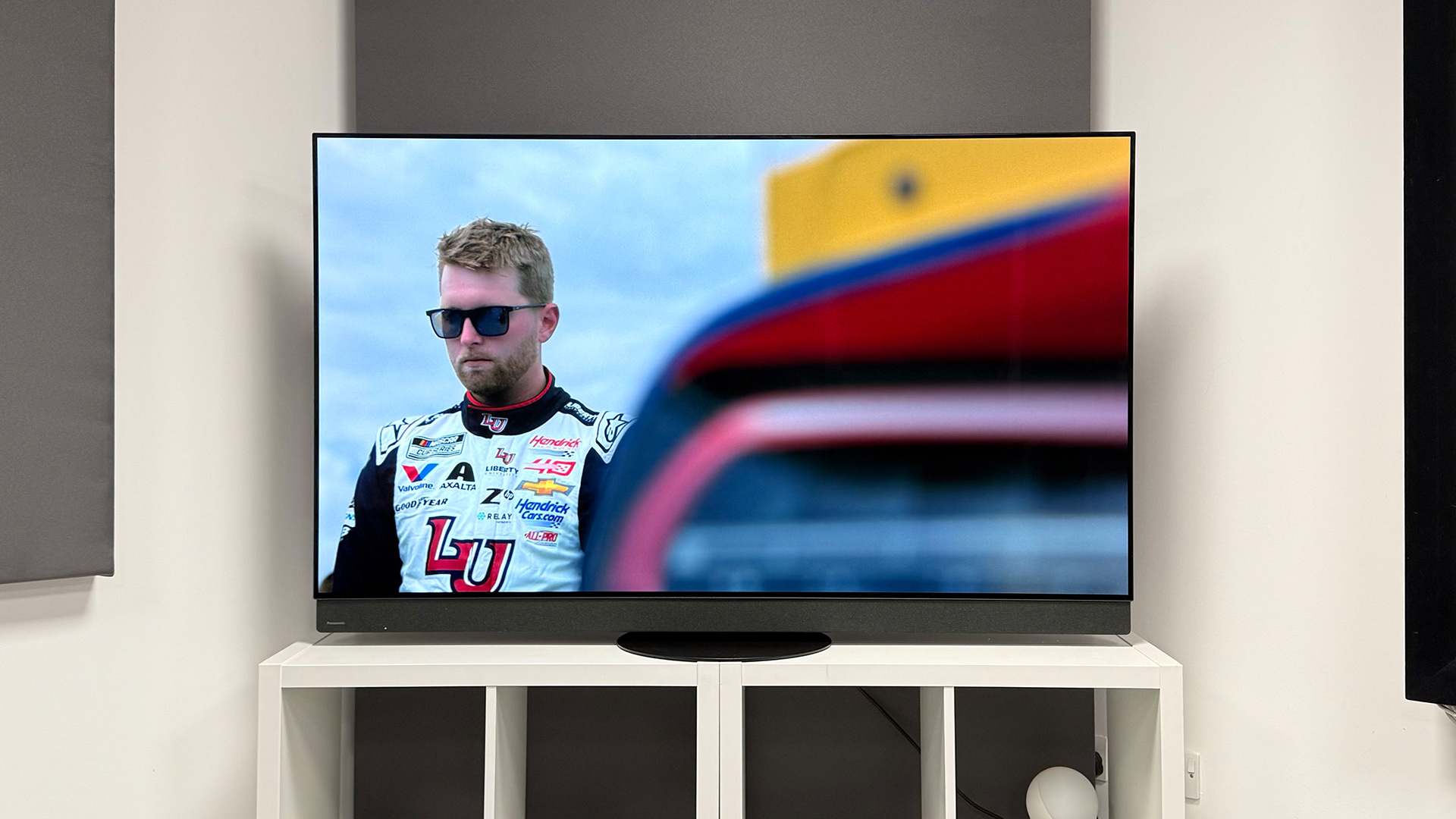
Unlike many of its peers in the OLED TV world, Panasonic has opted to redesign its latest flagship TV, and it’s done a rather good job of doing so. The Z95B looks and feels smarter, more premium, and generally more stylish.
It’s covered in a tasteful acoustic cloth that spans the length of the front-facing speaker bar, and it runs up the edges of the set and along the top, too, in order to cover the side-firing and upward-firing drive units.
Furthermore, the set trades the super thin portions interrupted by bulky box-out sections as seen on the Z95A for a more uniform width throughout. This means that when viewed side on, the Z95B looks thicker, but we think it looks better for it and overall a bit less awkward.
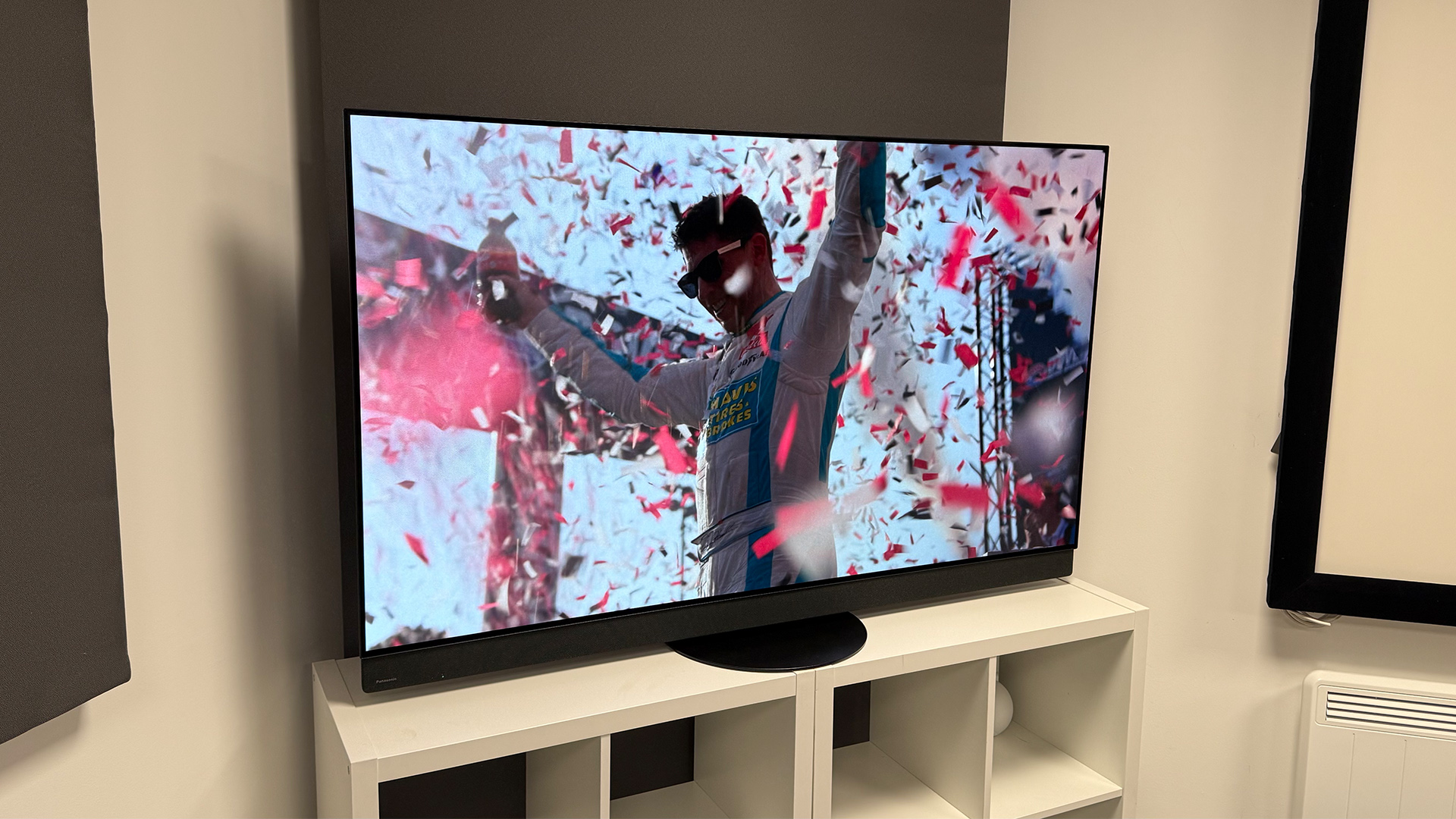
Screen size 65 inches (also available in 55 and 77 inches)
Type Primary RGB Tandem OLED
Resolution 4K
HDR formats HLG, HDR10, HDR10+, Dolby Vision
Operating system Fire OS
HDMI inputs x 4 (2 x 48Gbps HDMI 2.1)
Gaming features 4K/144Hz, 4K/120Hz, VRR, ALLM, Dolby Vision game mode
ARC/eARC eARC
Optical output? Yes
Dimensions (hwd, without stand) 89 x 145 x 5.2cm
And this redesign does more than just allow for a sleeker new look; it has a practical benefit too.
Panasonic has implemented a new cooling system, which it dubs ThermalFlow. This allows air to flow out of the top and bottom of the set for more efficient temperature regulation.
Panasonic claims that this new thermal management system allows it to push the panel harder, resulting in higher peak brightness.
Despite the redesign, Panasonic has thankfully opted to incorporate one of the best features of the Z95A; its swivel stand. The TV sits atop a circular pedestal stand that can rotate to allow you to view the TV at a comfortable angle, even if your sofa is not directly parallel to the TV.
There is, however, one aspect of the Z95A that we wish didn’t return, that being the remote. It does have positive aspects, such as the high-quality metallic finish and the most satisfyingly clicky buttons of any TV we’ve tested this year, but we’re sorely missing backlit buttons.
It’s worth noting that, unlike Sony and Samsung, Panasonic opts to only include one button-heavy remote in the box rather than pairing it with a trimmed-down secondary remote.
Features
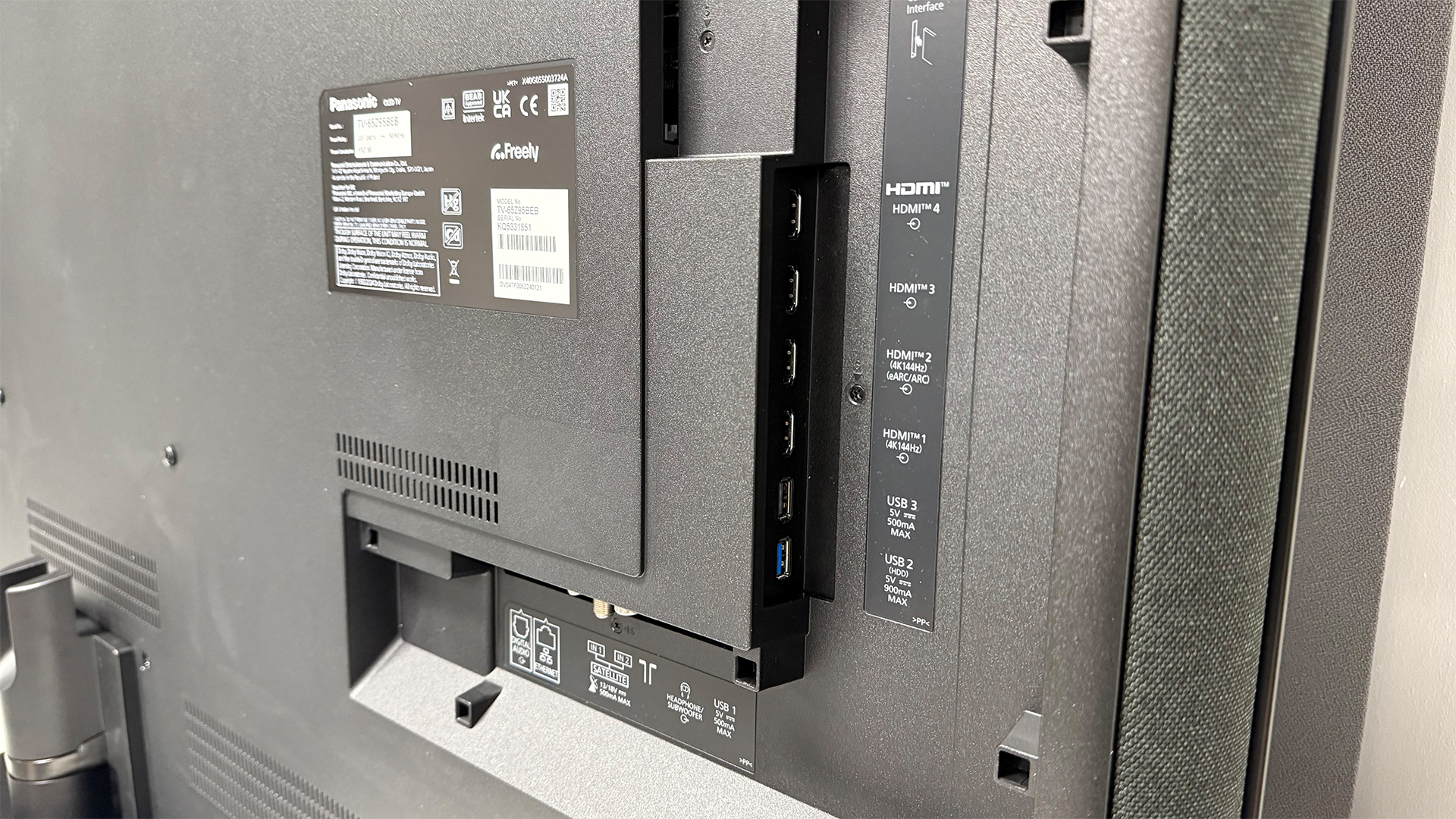
As you’d hope at this price, Panasonic has crammed a laundry list of features into this flagship OLED TV. It features the latest generation META OLED panel, with LG Display’s Primary RGB Tandem OLED display structure at its heart.
This panel promises significantly higher brightness than the outgoing Micro Lens Array panel (notably featured on last year’s Panasonic Z95A), and it achieves it through stacking four OLED layers – one red, one green, and two blue.
This also has the benefit of increasing colour volume, which is important as we did notice that a handful of the MLA OLED TVs sometimes looked a touch washed out in higher brightness scenes.
The Z95B also has a trick up its sleeve when it comes to HDR support. Unlike LG and Sony, which (aside from the standard HDR10 and HLG formats) are staunchly in the Dolby Vision camp, or Samsung, which has a strict HDR10+ only approach, Panasonic supports both of the competing dynamic HDR formats as well as the HDR10 and HLG static formats.
This is also a 144Hz panel, which should appeal to console and PC gamers. Those who play on the PS5 or Xbox Series X can take advantage of refresh rates up to 120Hz, while those with capable gaming PC rigs can enjoy the full 144Hz.
It’s worth noting here that Panasonic is lagging slightly behind the LG G5 and Samsung S95F, both of which support up to 165Hz signals, but that’s by no means a dealbreaker for the Z95B – very few people will even be able to take advantage of 144Hz support.
Unfortunately, gamers are limited to just two HDMI 2.1 sockets, with one of them doubling up as the HDMI eARC connector. Therefore, if you have more than one current-generation console and a soundbar that doesn’t feature HDMI 2.1 passthrough, then you’ll have a tough conundrum on your hands.
There may well be a solution to this conundrum, however. Panasonic is banking on you not needing to plug an external sound device into the Z95B, as it expects you to stick with the substantial built-in Dolby Atmos sound system, which has been tuned by its premium hi-fi division, Technics.
The TV features a front-firing speaker array housed in the soundbar section below the screen, alongside a side-firing speaker on each side of the television and dual upward-firing drivers. These are supported by a dedicated subwoofer (driven by a 30-watt amplifier) with dual passive radiators.
In total, this TV boasts a sound system with a claimed maximum power output of 170W – punchy indeed. Better yet, Panasonic has implemented its 360-degree Soundscape Pro system into this TV in order to create a more convincing surround-sound experience.
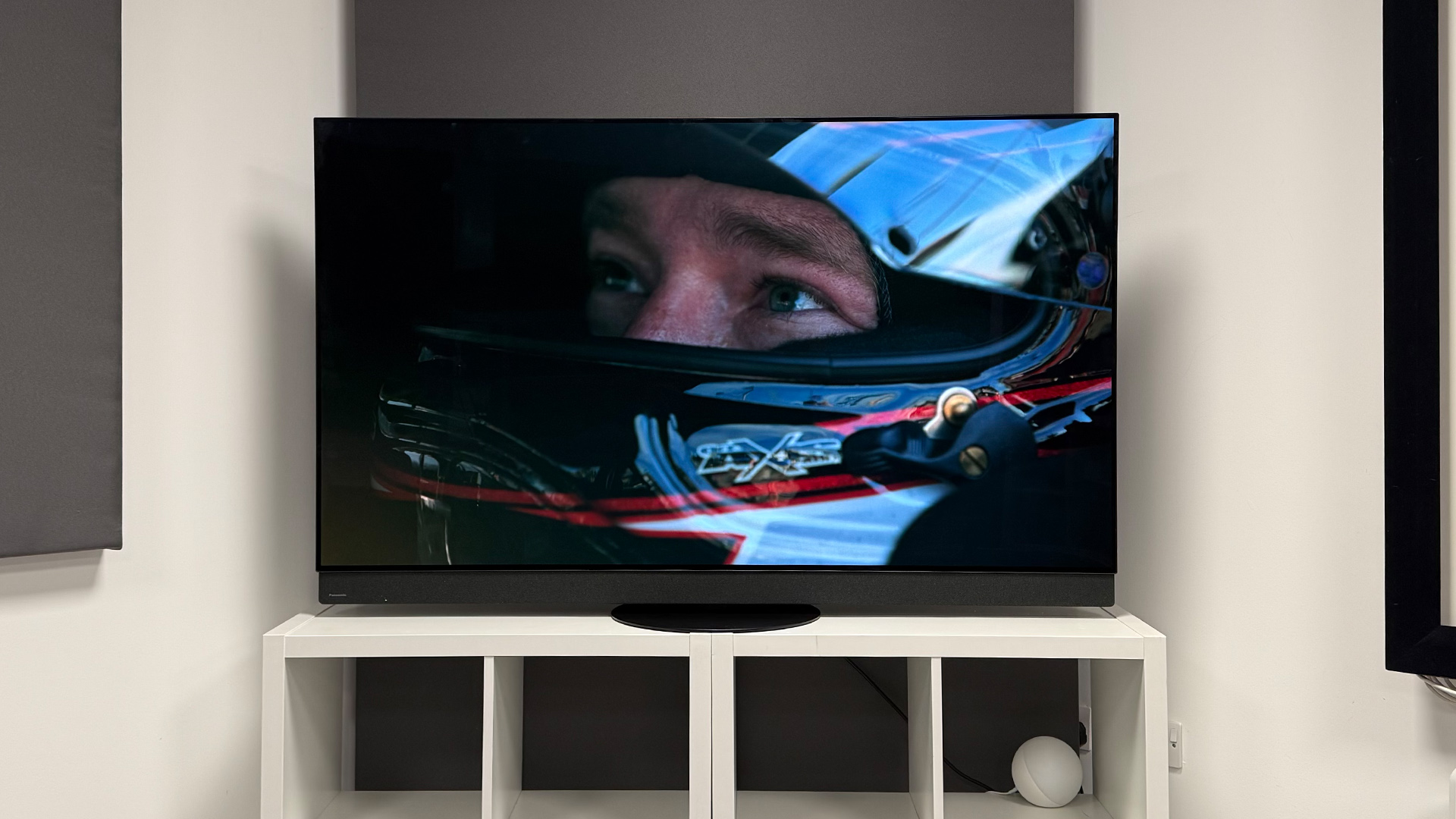
Running the show is Panasonic’s HCX Pro AI Processor MKII, which predictably leverages the power of artificial intelligence. It uses AI-backed picture processing to power its 4K Remaster picture engine, which sharpens lower resolution content (especially over streaming) to make it shine on the advanced OLED panel.
Panasonic has also implemented a new Amazon Prime Video calibrated mode, which accepts data from an Amazon server when streaming from its platform in order to adjust the picture settings to best suit the content. It’s worth noting that this is an optional setting, and Panasonic isn’t the first to implement this, as Sony introduced it on its 2024 range.
This new Amazon-focused feature does, however, hint at the ever-stronger partnership between the Japanese AV brand and the e-commerce titan, which is backed up by the inclusion of the Fire TV streaming platform.
This handles all of the built-in streaming and gaming apps, and while we’re not the biggest fan of its looks, we can’t argue with its comprehensive app offering. There are no noticeable gaps here in terms of international or domestic apps, and the Panasonic Z95B gets bonus points for having Freely integration.
We also quite like the tweaks that Panasonic has made to the system, such as the easy-to-access picture settings menu that makes on-the-fly adjustments quick and simple.
Returning to the remote that we griped about earlier, we do rather like the picture mode shortcut button, which can be found at the top of the handset; other TV manufacturers should take note.
Picture
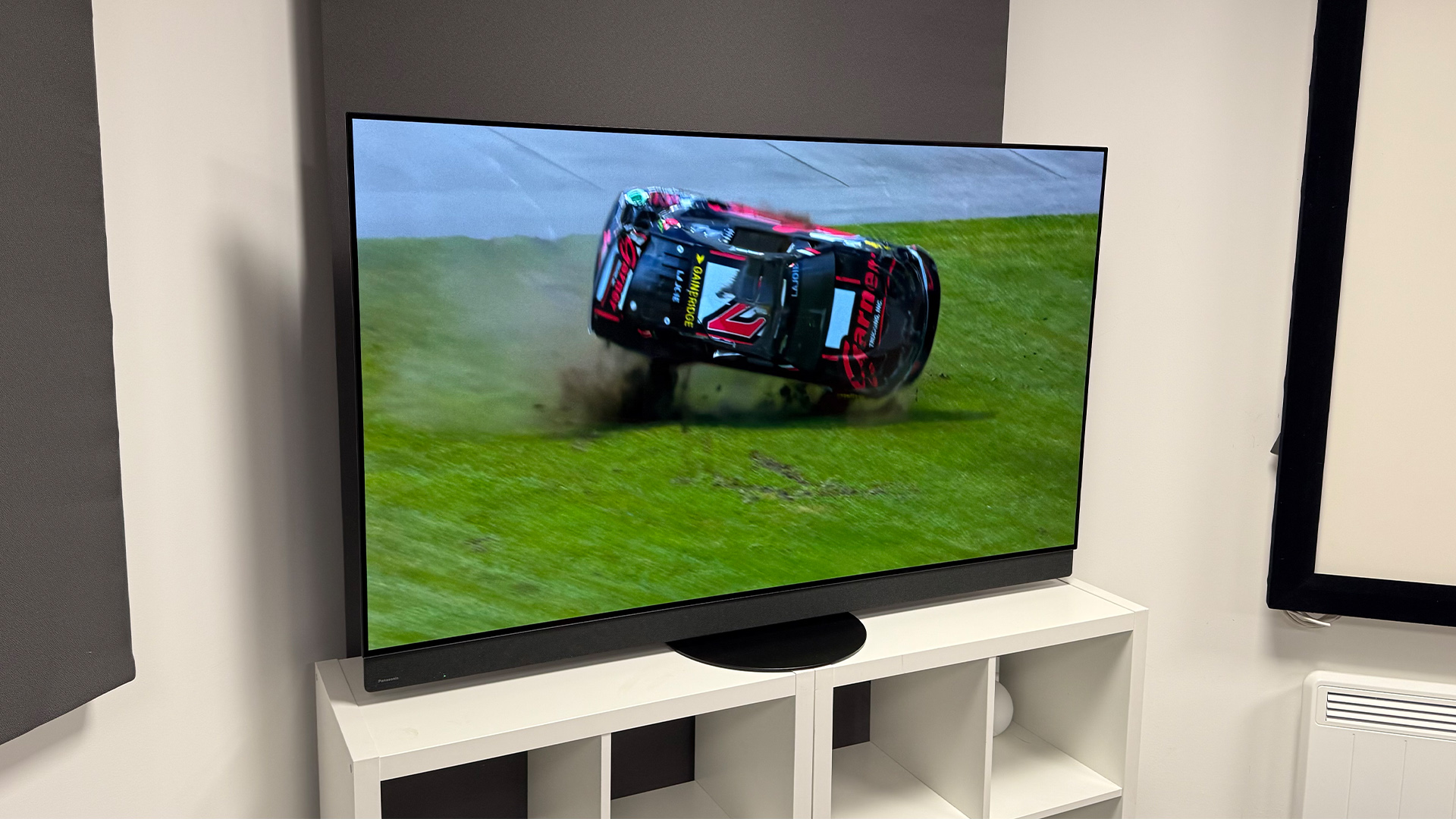
This is where things get serious. The Z95B is up against some seriously tough rivals in what has been a particularly spectacular year for OLED TVs.
We are comparing it against our current “best premium” choice in our best OLED TV list – the Sony Bravia 8 II. This Sony TV uses the competing QD-OLED panel technology from Samsung Display, so we expect to see some differences; however, Panasonic has its work cut out regardless.
We’ve hooked up our trusty Oppo UDP-203 4K Blu-ray player (which is sadly no longer on sale) and raided our shelf of reference 4K discs and digital library, selecting titles including Civil War, Alien Romulus, Blade Runner 2049, Top Gun: Maverick and, as this is a TV that touts major brightness boosts, the abysmal (but very bright) Pan.
We use our usual Filmmaker Mode shortcut, which is often our first stop in getting any TV to look roughly the way we want it to.
Starting with the climactic siege of Washington, D.C. from the final act of Civil War, the Panasonic looks impressively comparable to the Sony. At first glance, both seem to handle the darker sections of the sequence well, with good low-light colour volume and a rich, three-dimensional quality to the picture.
However, the further we test the Z95B in Filmmaker Mode, the more we realise that the TV isn’t operating to its full potential. It seems a little bit soft and is lacking the punch and brightness we presumed we would see based on our experience of testing the LG G5.
This is most evident in Pan. It just doesn’t have the same impact as when watched on the Sony, which pushes its QD-OLED panel harder to deliver stunning brightness and vivid colours.
Turning up the brightness on the Z95B does rectify this issue somewhat by adding a bit more zing to a picture that’s in danger of being described as a bit dull; however, this can result in some brightness clipping that diminishes details.
The Sony, on the other hand, finds a nice balance between delivering intense brightness while retaining detail, such as a clean outline of the sun during the flying pirate ship sequence of Pan.
We also find the Sony to be more adept at maintaining dark detail with this film, especially in the sequence in which the floating pirate ship drifts through a cavernous tunnel and into Blackbeard’s quarry. The captive children standing in the background of the shot are lost within the shadows on the Panasonic.
Sensing that something isn’t quite right here, we swap to the Z95B's True Cinema mode, which it assures us is very similar to the Filmmaker Mode, albeit with sharpness turned up slightly and the white balance adjusted to be closer to a studio reference monitor – this input comes from Hollywood colourist Stefan Sonnenfeld, with whom Panasonic has worked for a number of years.
We also opt to dial up Panasonic’s Resolution Remaster setting to medium, which seems to sharpen the image and add some necessary depth.
With these settings applied, the Panasonic seems to be much more in its element. It’s still not quite as dazzling as the Sony when it comes to Pan, but the richer, sharper and more balanced picture that the Panasonic presents in these settings does a good job of closing the gap.
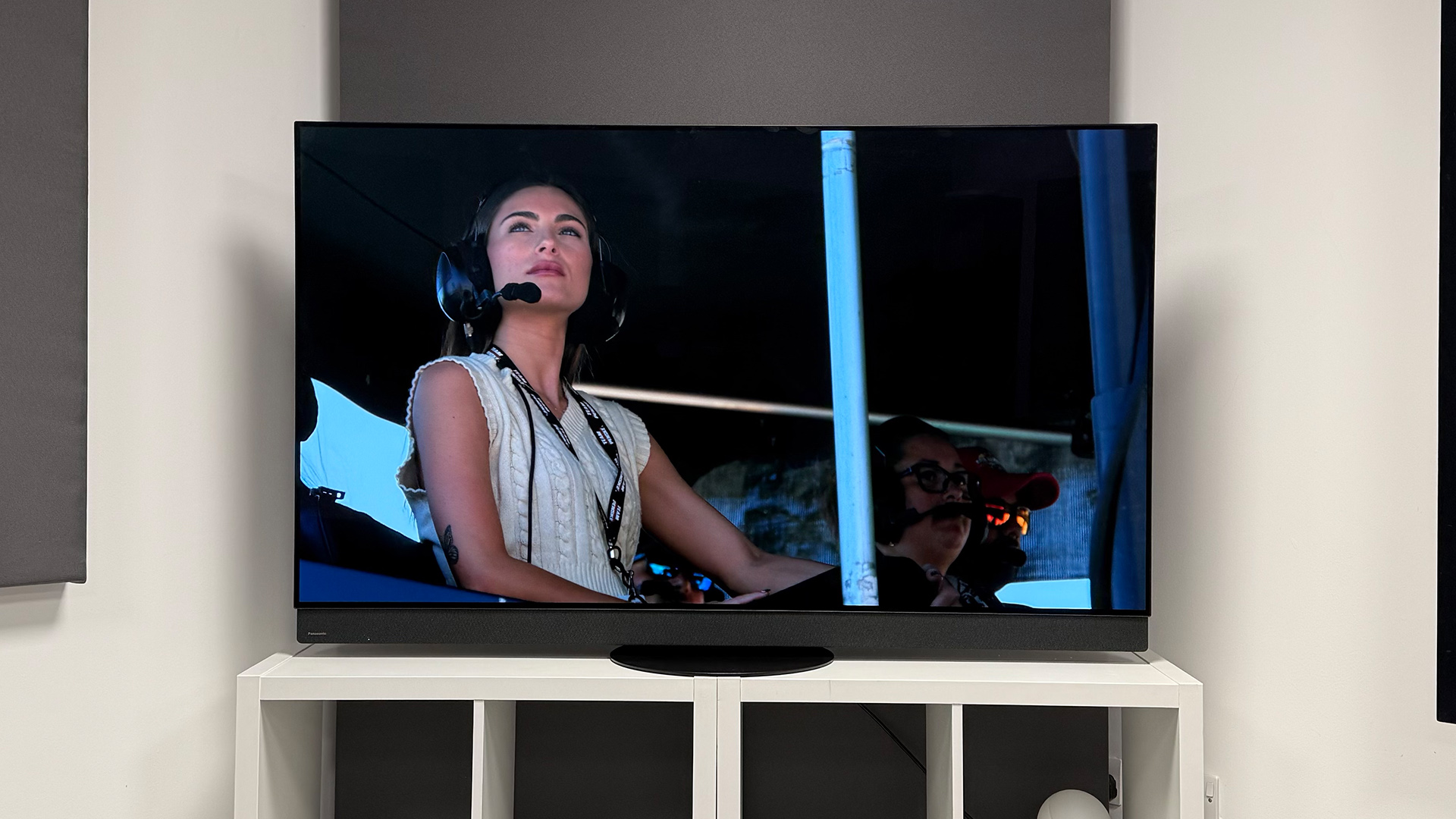
Switching back to Civil War, we find that the Panasonic’s contrast handling is greatly improved, allowing for a more strikingly three-dimensional image. A building in the background of a shot in which a sniper takes position is beautifully rendered, with sharp edges and tangible depth that makes it feel strikingly realistic.
Colours are also a highlight here, with a rich and vibrant quality that doesn’t stray into looking overcooked or unrealistic. Panasonic treads a careful line between remaining balanced while adding some necessary punch. The golden-hued intro of Top Gun: Maverick looks dazzling, with vibrant greens and oranges featured on the aircraft carrier’s crew uniforms.
We then switch to Alien Romulus in Dolby Vision on Apple TV+ to find out whether the Panasonic suffers from the same issue that befell the LG G5 in our first test – namely, some nasty near-black posterisation that rendered several scenes unwatchable. Thankfully, the Panasonic Z95B manages to dodge the issue.
With that out of the way, we can enjoy the rich and crisp Dolby Vision picture, which suits the retro-futuristic aesthetic of this film nicely. The blinking orange and yellow buttons in the cockpit of the spacecraft at the very start of the film glow with a vivid, eye-catching quality, while the stars that perforate the infinite void of space shine with pinpoint bursts of brightness.
When the film transitions to Rain dreaming of life on a much nicer-looking planet than the dystopian nightmare she currently finds herself on, we get to once again appreciate how the Panasonic balances rich, vibrant colours with plenty of authenticity.
We quickly switch to the 4K Blu-ray disc of Blade Runner 2049 to affirm our feelings, and it's apparent that the Panasonic is a talented all-rounder indeed. Motion is free from juddering or stuttering throughout our testing, even with our preferred approach of turning all motion-enhancing settings off.
Interestingly, the Panasonic’s colours are a little warmer than the Sony's, which can comparatively look slightly cool. Eventually, we decide that the true colour accuracy probably lies somewhere in between these two excellent TVs, though neither looks outwardly wrong.
Before we conclude our picture testing, we try a standard Blu-ray copy of True Grit to see how the Z95B handles upscaling lower resolution content.
The Panasonic looks surprisingly sharp and clean, which could be the 4K Remaster picture engine working its magic. Regardless, you should have no trouble watching 1080p content on this TV if you plan on using non-4K Blu-rays or the lower tiers of a streaming service.
Sound
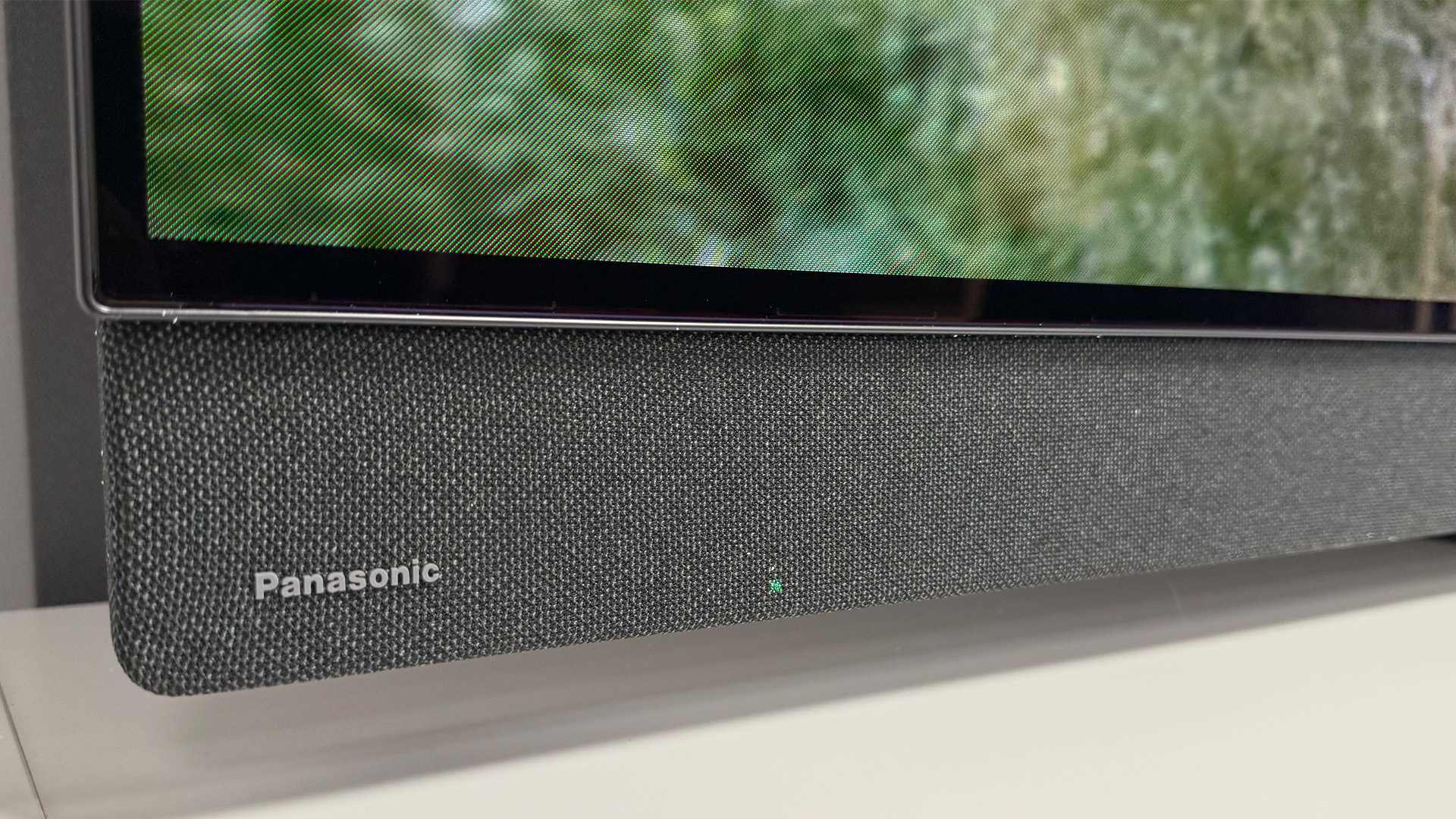
The Panasonic Z95B takes audio a bit more seriously than most of the OLED TVs we see on the market. As we’ve established, the built-in Dolby Atmos sound system is tuned by Technics, and it includes an automatic room-adjustment calibration system, which can adapt the output to best suit your viewing space.
So, has Technics delivered the ultimate OLED TV sound system? Realistically, the Z95B sounds good rather than great, but we’ll start with the positives.
There’s no doubting the spatial capabilities of this sound system, as the disembodied voices of the holographic adverts seen when Officer K walks back to his apartment are presented with a genuine sense of height.
It also presents quite a direct sound, with voices being projected outward towards your seating position with a decent sense of clarity. Detail levels are good, too.
There's also a decent dose of musicality to this system, with the upbeat soundtrack of Pan being presented with decent timing and dynamics.
However, the Z95B seems to struggle somewhat when it comes to lower frequencies. Chapter two of Blade Runner 2049, which features a notoriously tricky section, feels a touch lightweight, and what bass there is doesn’t feature much in the way of tonal variation.
As a result, there’s a lack of tension in this sequence; we attempt to rectify this with the Bass Boost setting, but that quickly results in some uncomfortable distortion that does more harm than good overall.
We also find that dialogue can carry some noticeable sibilance, which is combined with a lack of richness and dynamism, resulting in a sharp, flat effect on voices.
The Z95B still sounds significantly better than most rival TVs, including the LG G5 and Samsung S95F, but it perhaps doesn't quite deliver on the promise of its extravagant speaker system.
Verdict
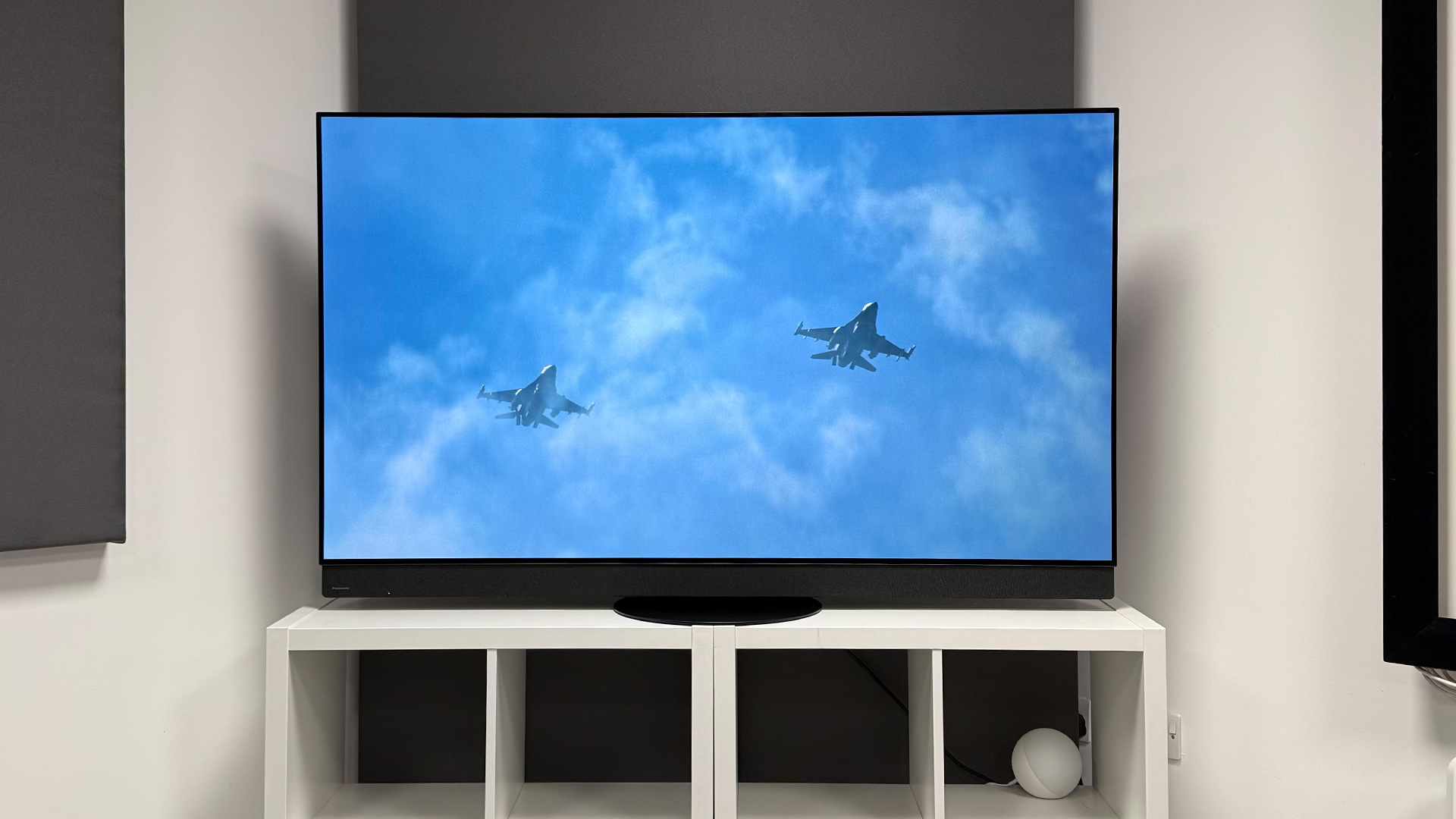
The Panasonic Z95B isn’t a perfect OLED TV, but it is a very likeable one. It requires some time and attention in order to get the best out of it, but once you have it dialled in, you can expect to be rewarded with a rich, authentic and engaging picture.
This is backed up by a decent set of gaming and streaming features, as well as a sound system that’s certainly a cut above the vast majority of TVs, resulting in a solid all-rounder of a TV.
What's more, this all comes packaged in an attractive new design that covers both form and function, making this TV a worthy addition to the roster of flagship sets we’ve seen so far this year.
SCORES
- Picture 5
- Sound 4
- Features 4
MORE:
Read our review of the LG G5
Also consider the Sony Bravia 8 II
Read our LG C5 review
Best TVs: flagship OLEDs and budget LED sets tried and tested







